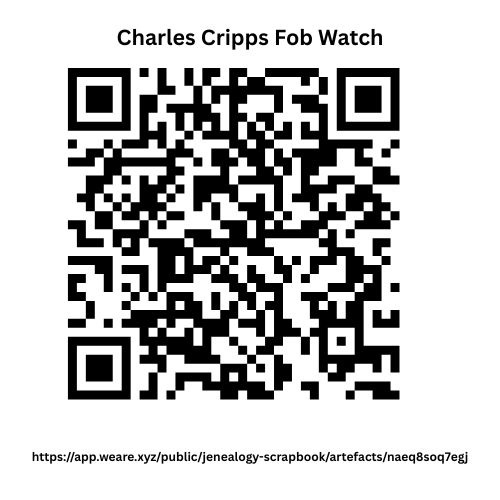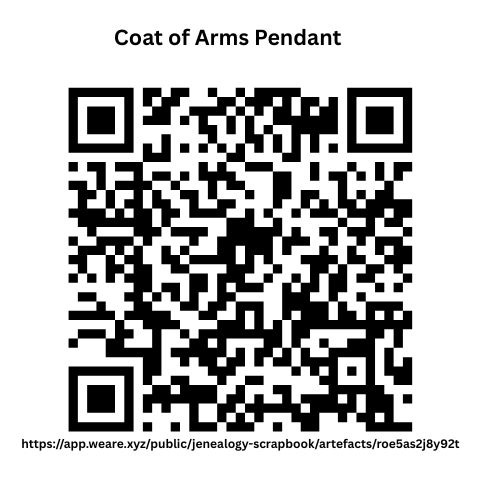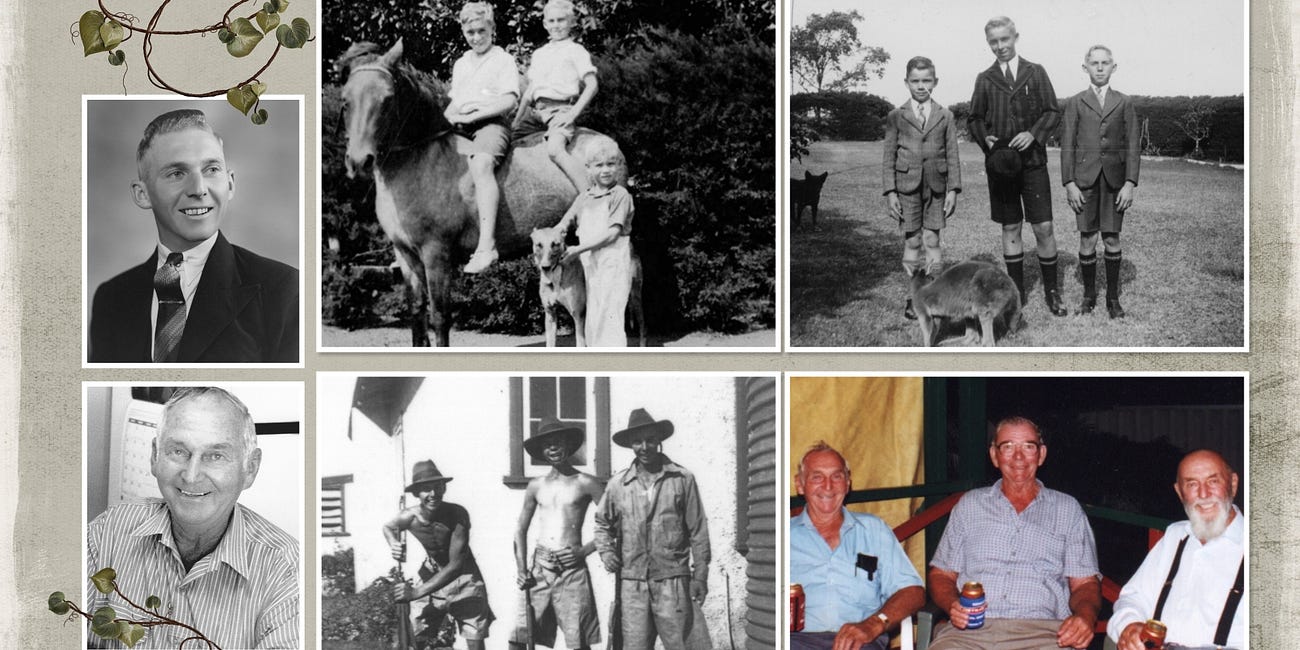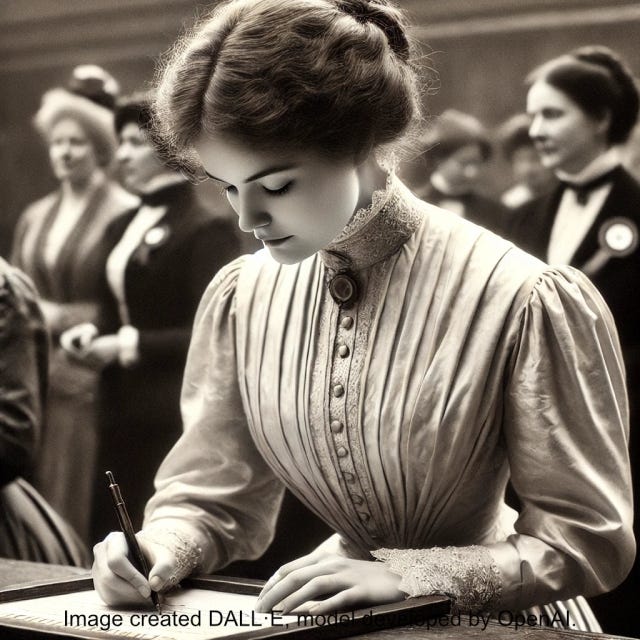We all have them—those boxes of treasured items tucked away in cupboards and drawers. Like my grandmother's 1908 pendant, great-grandfather's 1880 pocket watch and my favourite doll my grandmother gave me when I was five. These objects hold stories, but too often, when they pass to the next generation, those stories are lost forever.
"What was this?" my children will one day wonder, holding objects that meant something to me. "Why did Mum keep this?"
I recently found myself sorting through items that belonged to my parents and grandparents. Some pieces immediately transported me back to childhood memories—I knew exactly what they were and why they mattered. But others? I found myself wishing I had asked more questions when I had the chance.
💡That's when I had a lightbulb moment.💡
What if I could tag each item, like a museum does, but with a modern twist?
So, I started adding QR Codes to some of my photographed memorabilia. The QR Code, when scanned with a phone or a tablet, links directly to a story I’ve written on my WeAre.xyz website, where I’ve carefully recorded something about each item.
It’s a simple tool, really—just a square of black and white pixels. But it holds so much more than data. It holds a link to the past.


The Problem of Lost Stories
This experience made me realise I don't want my children and grandchildren to face the same mystery when they eventually inherit my treasured possessions. I like to think of it as my own little museum or as I’ve been calling it for some time, my museum in a box. I want these objects that one day will be found amongst my things, that they once belonged to someone and meant something.
Imagine my grandchildren—or perhaps even their children—one day sorting through my belongings. Instead of scratching their heads and tossing aside "some old doll" or "an old broken pocket watch," they’ll scan a code and be transported to a page where I’ve written about that very object. Maybe it's the walky talky doll Nanna gave me when I was five. Maybe it’s a medal from Charles Cripps, my great-grandfather, who fought in World War I, or the letters he wrote from the Western Front. Each item has a story, and this is my way of making sure those stories don't get lost.
Maybe in doing so, by finding these objects and scanning these codes, they find me too. I don’t want to be just a name on a family tree chart, but as a woman who spent her days piecing together the lives of those who came before—and who left behind a few stories of her own—the family historian!
So if you’re the kind of person who keeps the little things—the buttons, the brooches, the letters, the baby shoes—maybe this is something you could do too. A way to tell the stories before they’re gone. A way for what’s found to never again be forgotten.
Building Digital Bridges with QR Codes
My solution is simple although you do need a bit of tech knowhow:
Document the artifact: I photograph each meaningful item and write its story on my WeAre.xyz website—where it came from and who it belonged to.
Create a QR code: For each item, I generate a QR code that links directly to its page on my website. I have found I can do this for free using Canva.
Connect physical to digital: I attach a small, unobtrusive QR code to the item itself or its storage container.
The result? When future generations discover these items, they won't just see an old object—they'll scan the code and instantly access its complete history, photos, and significance to our family.
More Than Just Facts
What makes this project especially meaningful is that I'm not just recording dry information about each item. I'm capturing:
Personal stories and memories associated with the object
Historical context from our family's perspective
Connections to other family members and heirlooms
Photos showing the item
I’ve added one video recording and hope to add more, of my memories and those of my father and grandmother that I recorded many years ago.
If you wish, these stories can be made public or private. I’ve chosen public so other family members that I’ve not yet met, can find them too.
The Future-Proofing Question
Of course, there's the elephant in the room or dinosaur as someone put it: will QR codes even exist in 10-20-30 years? Will websites like mine still be accessible? Technology changes rapidly, and there's no guarantee that the digital bridges I'm building today will remain functional tomorrow.
But I've come to peace with this uncertainty for several reasons:
Nothing is permanent: Even traditional methods of preservation face challenges—written notes get lost, photos fade, memories blur with time, homes get destroyed in floods, fires or from intruders.
Redundancy helps: I'm also keeping physical copies of the stories in a print form, ensuring the memories survive even if the digital links don't.
The act itself matters: The process of documenting these stories forces me to reflect on what matters and why I've kept these objects.
Even if the technology eventually fails, I'm creating something valuable right now—an organised collection of family stories tied to tangible objects that might otherwise remain mysterious.
Starting Your Own Digital Memory Bridge
If you're inspired to start a similar project, here's how to begin:
Start small: Choose 3-5 of your most treasured items that you know the stories about.
Document thoroughly: Take clear photos, write down everything you know, and record any relevant oral histories.
Choose a stable platform: Select a website platform with longevity in mind. Remember, nothing is guaranteed. I use WeAre.xyz however, there are others like here on Substack, Wordpress and Blogger.
Create and attach QR codes: Many free services generate QR codes eg Canva—For truly long-term preservation, print them on acid-free paper with pigment-based inks and store them in archival-quality polyester sleeves rather than standard lamination. I initially laminated mine for protection, but I might need to look into more archival methods for the long term.
Share the process: Let family members know what you're doing and how to access the information.
(I’ve also pinned a printed copy of the codes on my office cork board!)😘
Back up your QR codes: Don’t just rely on the physical QR codes attached to your items. I’ve saved digital copies of each QR code in my cloud storage and photo organising software alongside the photo. If a code gets damaged or lost, I can easily print a replacement.

Create a simple master catalogue: I’ve created a basic Word document listing all my tagged items with their locations and the URLs the QR codes link to. This makes it easy to check which stories I’ve already documented and helps family members find specific items they might be curious about.
Think layers of preservation: Remember, no single preservation method is foolproof. I’m using a combination of physical labelling, digital stories, cloud backups, and printed summaries. If one layer fails, the others still protect those precious memories.
Our objects tell our stories. By creating these digital memory bridges, we ensure that when our loved ones hold something we treasured, they'll also hold its story—and by extension, a piece of us.
I hope this has inspired you to do something now, before it’s too late, to create a digital bridge for the next generations.
Have you missed some of my previous posts? Click these links to check them out.
Memories of Uncle Ernie
Uncle Ernie Cripps had been writing his memoirs for many years when he approached me, Jenny MacKay, prior to 2012. He asked for my assistance in organising his notes and producing them as a printed booklet to share with his siblings, immediate family, and close friends. Uncle Ernie passed away in May 2016. Recognising the rich historical value contained…
Finding Emily
It is with huge thanks to Barbara at Projectkin that I sort to uncover women suffragettes in my family tree, and through Robin Stewart at Genealogy Matters, the 31 Day Women in History Challenge started me off on this journey of discovery.





